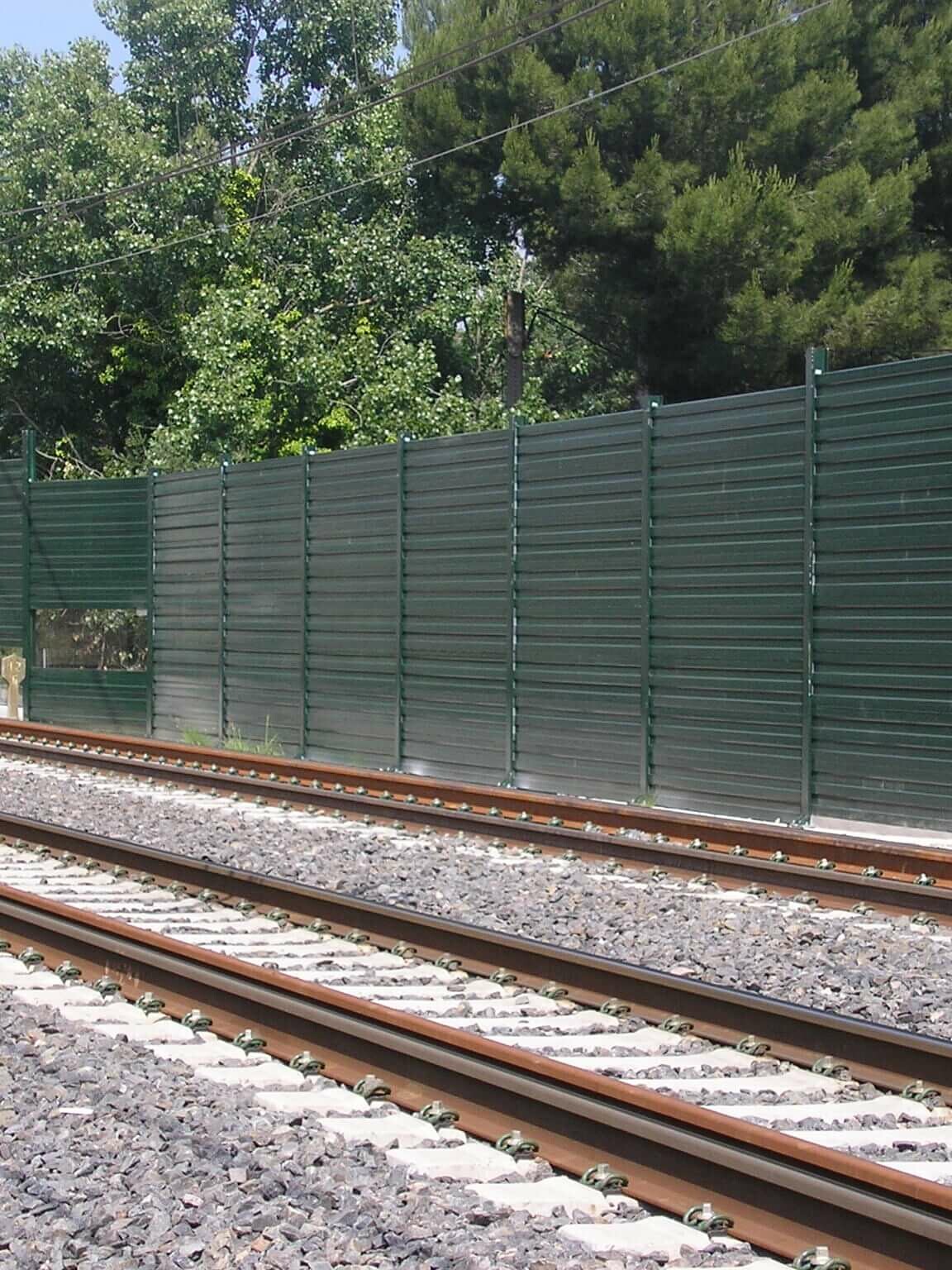
Regulations on railway track noise barriers
This set of standards provides the indications to be taken into account for the installation of noise barriers and related devices acting on airborne sound propagation in railway applications.
ACOUSTIC PERFORMANCE IN DIFFUSE SOUND FIELD.
- UNE EN 16272-1:2013
Railway applications. Track. Noise barriers and related devices acting on airborne sound propagation. Test method for determining the acoustic performance. Part 1: Intrinsic characteristics. Sound absorption in the laboratory under diffuse sound field conditions.
- UNE EN 16272-2:2013
Railway applications. Track. Noise barriers and related devices acting on airborne sound propagation. Test method for determining the acoustic performance. Part 2: Intrinsic characteristics. Airborne sound insulation in the laboratory under diffuse sound field conditions.
- UNE EN 16272-3-1:2013
Railway applications. Track. Noise barriers and related devices acting on airborne sound propagation. Test method for determining the acoustic performance. Part 3-1: Normalized railway noise spectrum and single number ratings for diffuse field applications.
- UNE EN 16727-1:2019
Railway applications – Track – Noise barriers and related devices acting on airborne sound propagation – Non-acoustic performance – Part 1: Mechanical performance under static loadings – Calculation and test method
- EN 14389-1: Long-term performance, acoustical characteristics.
- EN 14389-2: Long-term performance, non-acoustical characteristics.
There are several Eurocodes that we use depending on the nature of the project, the elements forming it, or the environment for which the equipment is intended, for example Eurocode 2 for the design of concrete structures or Eurocode 3 for the design of steel structures.
We use specific instructions, such as IAP-11, IAPF-07, or GCOC. Our team’s experience and the nature of the project determine the most appropriate standard for each situation.
FAQs
Nowadays, rail is a means of transporting people and goods that causes noise-related problems along the tracks in urban and periurban environments.
To solve the problem of environmental acoustic pollution caused by rail traffic, acoustic screens acting as a barrier to the noise, which varies depending on the speed of the train, must be used.
The EIDs for railway projects set maximum immission levels that the infrastructure must not exceed. The sound is dampened by installing acoustic screens that absorb some of the noise at railway crossings.
Specialist acoustics engineers draft noise and vibration control projects that involve analysing the impact they might have on railway lines accessing towns and cities, on railways stations or on their interaction with infrastructure (bridges, tunnels).
We can classify different types of panels based on acoustic values obtained by testing in accredited laboratories. The modular nature of the panels, with minimum, average and maximum sound absorbing and insulating values, means they can be adapted to different solutions, regardless of the height or length of the screen. However, the general performance of the screen must also be based not only on the type of panel (appropriately sized) but also on the quality of the materials used. Consideration must also be given to the weather and the environmental factors to which the panels will be exposed: wind, snow, UV rays, dew, and corrosive or marine environments, etc. All the aspects mentioned as a whole will serve as a guide for project technicians to select the right panel for each project.
